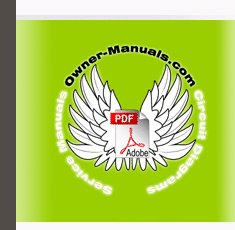|
|
|
Categories
|
|
Information
|
|
Featured Product
|
|
|
 |
|
|
There are currently no product reviews.
 ;
I had been looking for a Manual for my CS2150 for quite a while -- in fact I had just about given up. I saw this site and decided to download the Manual. When I Received it by Email I was really pleased with what I got, with the result that My Kenwood 'Scope is now 100% repaired and working well. As an AV Serviceman, you need a good 'scope, and thanks to this site, and the Service Manual, I have been able to repair it. The Manual was a copy of the Factory Original and the copy was very clear, especially in the area of the Circuit Schematics, where You really need to be sure of what You are looking at.
 ;
I recently purchased a manual for a Samsung DLP tv to help with a trouble shooting problem I was having. Every tv repair shop wanted close to $400.00 for the fix, but after I found Owner-Manuals.com I hit pay dirt. The manual they had for me to purchase and download was a complete service manual for the exact tv I needed. It was complete with wiring diagrams, schematics, and even part numbers. If your the fix it yourself type I highly recommend trying to find any manual here before paying someone else to fix whatever problem your having.
 ;
Once again, excellent price and manual delivered in a timely manner and as advertised!
 ;
Outstanding quality manual. This is the exact documentation I needed to service my AKAI GX-210D. This is a PERFECT COPY of the service manual for my machine. Outstanding service. Thank-you!
 ;
This service manual have great value... Recommended A+++++++
2.3 DISASSEMBLY/ASSEMBLY OF MECHANISM ASSEMBLY 2.3.1 General statement The mechanism should generally be disassembled/assembled in the EJECT mode (ASSEMBLY mode). (Refer to Fig. 2-3-1.) However, when the mechanism is removed from the main body, it is set in the STOP mode. Therefore, after the mechanism is removed from the main body, supply 3 V DC to the electrode on the top of the loading motor to enter the mechanism mode into the EJECT mode compulsory. <Mechanism assembly/Cassette housing assembly>
DC3V
<SUB CAM GEAR>
TOP VIEW
BOTTOM VIEW
Fig. 2-3-2
<EJECT mode>
Fig. 2-3-3
Motor
<C IN mode>
Fig. 2-3-4
<SHORT FF mode>
Fig. 2-3-5 <Back side of the mechanism assembly>
<STOP mode>
Fig. 2-3-6
EJECT mode Back side of deck
<REV mode>
Fig. 2-3-1 2.3.2 Explanation of mechanism mode The mechanism mode of this model is classified into six modes as shown in Table 2-3-1. Each mechanism mode can be distinguished from others by the relative position of � � mark on the sub cam gear to the inner or outer protrusion on the main deck. Refer to Fig. 2-3-2 to 2-3-8 below. The EJECT mode, C IN mode and SHORT FF mode should be recognized by the relative position of the � � mark to the inner protrusion, while the STOP mode, REV mode and PLAY mode should be recognized by that to the outer protrusion. Fig. 2-3-8 2-3
Fig. 2-3-7
<PLAY mode>
|
|
 |
> |
|
